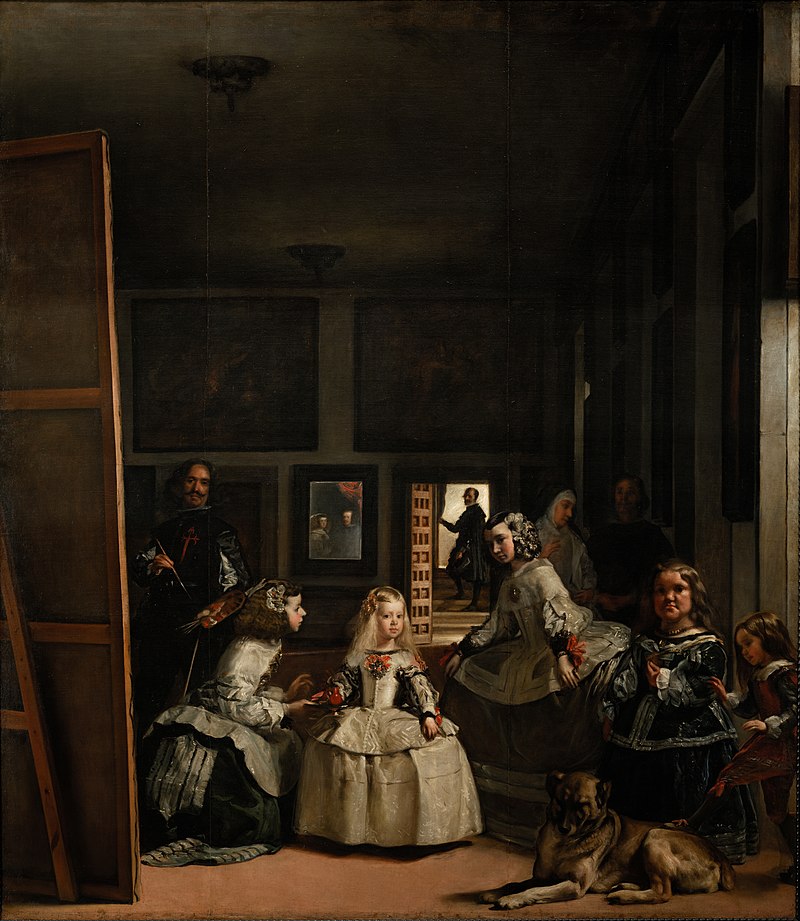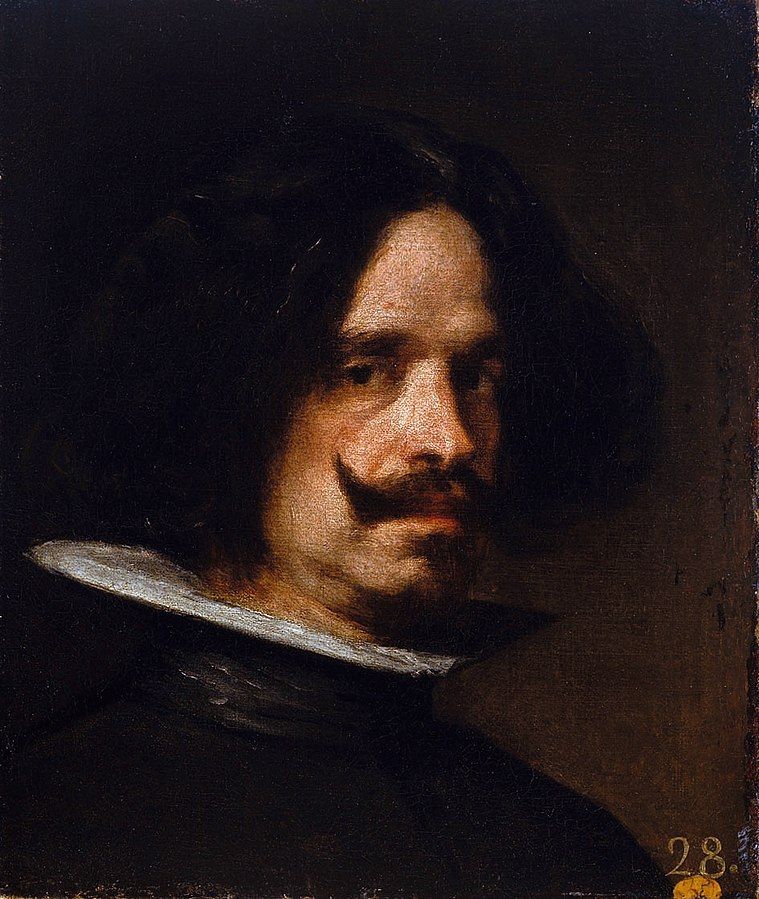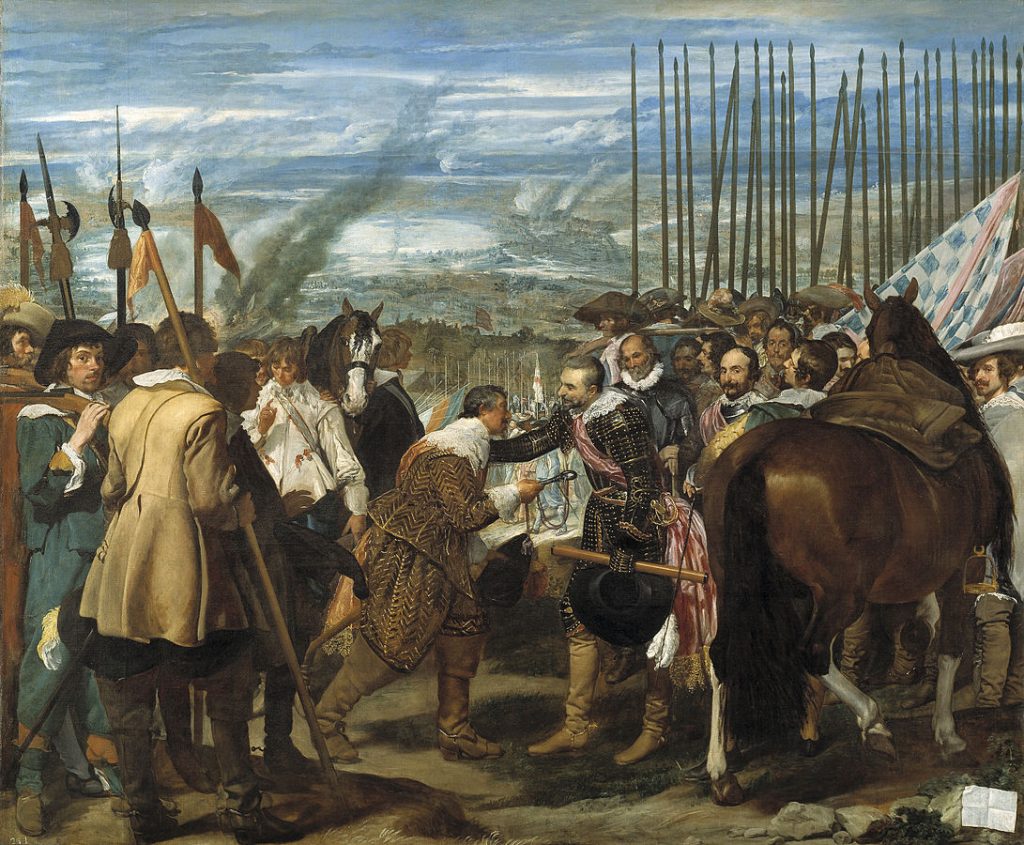Smriti Malhotra
Diego Velázquez (1599-1660) a Spanish painter who was born in Madrid, Spain, is widely regarded as one of the greatest artists of the Baroque period. He was a master of capturing realism and employing innovative techniques to create visually stunning and intellectually engaging artworks. Velázquez’s body of work spans a wide range of subjects, including portraits, historical and mythological scenes, and genre paintings. Here, we will delve into some of Diego Velazquez’s notable artworks and explore the complexities and creativity within his artistic approach.
Diego Velázquez (1599-1660)
- Las Meninas (The Maids of Honor) (1656): Considered Velázquez’s masterpiece, Las Meninas is an enigmatic and complex painting that showcases his mastery of composition, light, and perspective. The painting depicts a scene in the Spanish court, with the young Infanta Margarita surrounded by her ladies-in-waiting, palace officials, and Velázquez himself in the act of painting. The composition is intricate, with the artist intentionally blurring the boundaries between reality and illusion. Through the use of mirrors, reflections, and spatial ambiguities, Velázquez invites the viewer to question their role as observers and the nature of art itself.
- The Surrender of Breda (1634-1635): This monumental historical painting portrays the surrender of the Dutch city of Breda to the Spanish army during the Eighty Years’ War. Velázquez captures a decisive moment, emphasizing the humanity and nobility of both the conquerors and the conquered. The painting showcases his ability to convey emotions, the subtleties of facial expressions, and the play of light and shadow. Velázquez’s attention to detail and his meticulous rendering of the soldiers’ uniforms and armour further demonstrate his technical prowess and commitment to historical accuracy.
- Portrait of Pope Innocent X (1650): This portrait is considered one of Velázquez’s most striking and psychologically penetrating works. The intense gaze and the vivid rendering of the Pope’s features capture the essence of his personality and power. Velázquez eschews flattery and presents an unflinching portrayal, revealing the complex and authoritative nature of the sitter. The painting exemplifies Velázquez’s ability to depict the inner thoughts and emotions of his subjects while maintaining a sense of realism.
- Christ Crucified (1632): In this poignant and emotionally charged painting, Velázquez depicts the crucifixion of Christ with a powerful sense of realism. The depiction of Christ’s body, the facial expressions of the surrounding figures, and the dramatic lighting evoke a profound sense of empathy and contemplation. Velázquez’s ability to convey the human experience and the depths of emotion is evident in this deeply spiritual work.
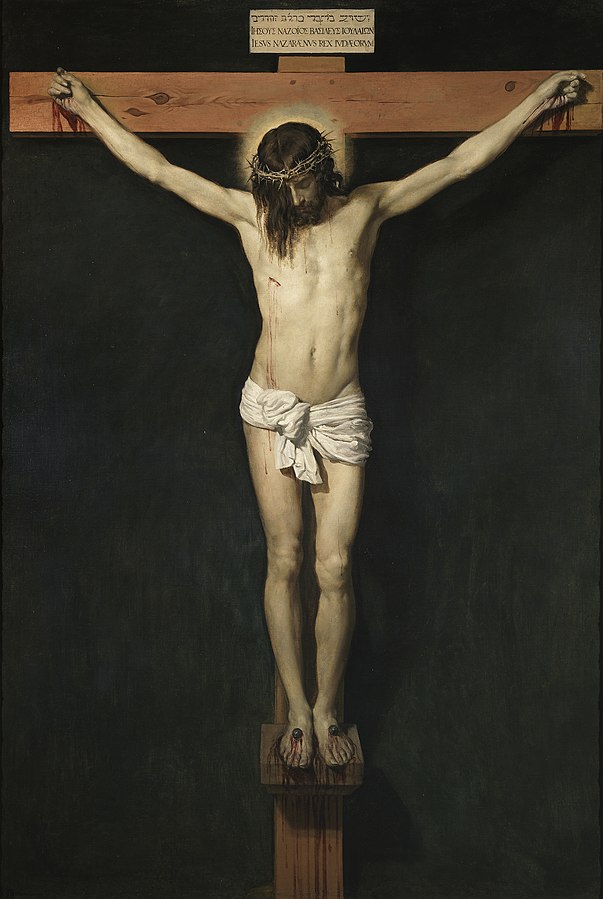 Christ Crucified, 1632. Courtesy: Wikimedia Commons
Christ Crucified, 1632. Courtesy: Wikimedia Commons - The Rokeby Venus (1647-1651): This sensuous and controversial painting is a reclining female nude, also known as “The Toilet of Venus.” Velázquez’s innovative composition and treatment of light create a mesmerising play between shadows and highlights, accentuating the curves and contours of the figure. The portrayal of the female nude was uncommon in Spanish painting at the time, and Velázquez’s approach challenged societal norms and sparked debates about the depiction of the female body in art.
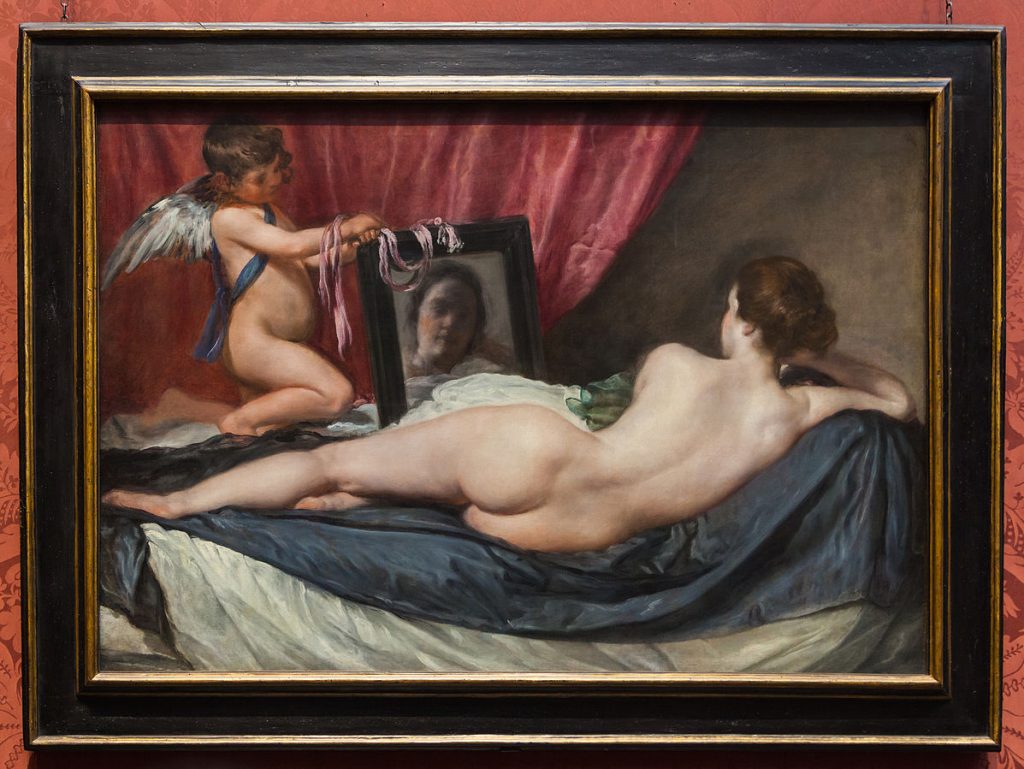
The Toilet of Venus,1644. Courtesy: Diego Delso (Wikimedia Commons)
Velázquez’s artistic legacy extended far beyond his lifetime. His innovative techniques and approach to portraiture had a profound influence on subsequent generations of artists. His loose brushwork and emphasis on capturing the essence of his subjects were particularly influential on artists like Édouard Manet, John Singer Sargent, and Francis Bacon. Velázquez’s emphasis on realism and his ability to imbue his works with psychological depth laid the foundation for the development of modern portraiture.
Velázquez’s artistic genius lies not only in his technical skill but also in his ability to infuse his paintings with depth, complexity, and intellectual intrigue. His masterful use of light, composition, and attention to detail enabled him to create realistic and psychologically compelling artworks. Through his exploration of diverse subjects and his innovative approach to representation, Velázquez continues to inspire and captivate audiences, solidifying his place as a pioneering figure in the history of art.

